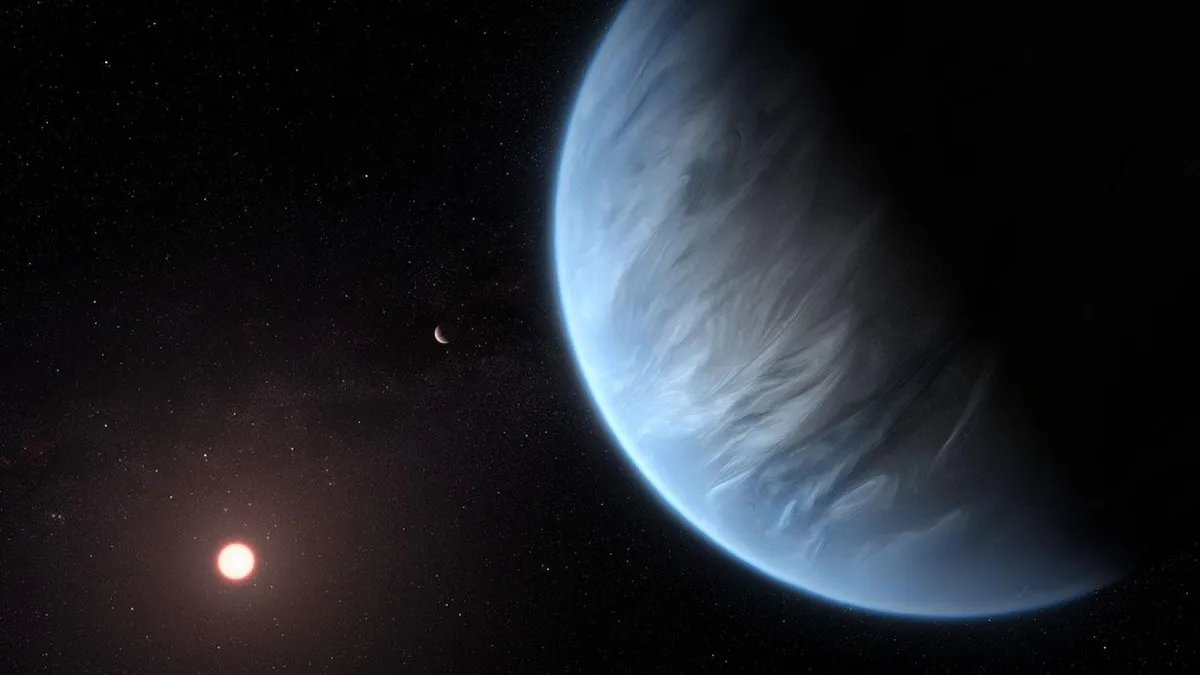
In April 2023, a groundbreaking announcement captivated scientists and space enthusiasts alike when researchers revealed they had detected a molecule in the atmosphere of a distant planet that could potentially indicate extraterrestrial life. However, a recent analysis conducted by scientists from the University of Chicago has introduced skepticism regarding this significant finding. The study, which meticulously reviews data from various observations of the planet, concludes that the evidence is far from conclusive. The findings raise important questions about the initial claims of life on K2-18b and highlight the complexities involved in interpreting astronomical data.
The April announcement, led by a team of researchers from Cambridge, centered on a planet known as K2-18b, located approximately 124 light-years from Earth. The researchers analyzed data collected by the James Webb Space Telescope (JWST) and asserted the presence of either dimethyl sulfide or dimethyl disulfide—two molecules that are exclusively associated with life on Earth. However, the University of Chicago astrophysicists sought to reassess this data, adhering to the principle that extraordinary claims require extraordinary evidence.
Understanding the atmosphere of a planet like K2-18b is no small feat. The vast distance—many light-years—makes direct observation impossible, necessitating indirect methods of data collection. The JWST detects atmospheric signatures by observing starlight that filters through the planet's atmosphere when it transits in front of its star. This process results in varying wavelengths of light being blocked, depending on the molecules present in the atmosphere. According to Rafael Luque, a postdoctoral researcher at UChicago and lead author of the new study, the current data is “too noisy” to support a definitive claim about the presence of life. “There’s just not enough certainty to say one way or the other,” he stated.
Michael Zhang, a co-author of the study, elaborated on the difficulties associated with interpreting faint data. “When working with readings this faint, it’s very challenging to uniquely identify a specific molecule,” he explained. Molecules such as dimethyl sulfide, which contains a carbon bonded to three hydrogens, can produce similar spectral signatures as numerous other compounds. This overlap makes it difficult to ascertain whether the JWST is indeed detecting dimethyl sulfide or another molecule altogether, such as ethane—a gas commonly found in the atmospheres of various planets, including Neptune.
The principle of favoring the simplest explanation is critical in scientific research. Co-author Caroline Piaulet-Ghorayeb emphasized that researchers should first consider molecules that are known to exist in planetary atmospheres before introducing more exotic possibilities. In this instance, the ambiguity between dimethyl sulfide and ethane illustrates the necessity of caution in scientific interpretation. “We should only introduce exotic molecules in the interpretation after ruling out more common candidates,” she said.
Another significant point raised by the University of Chicago researchers is that the April analysis was based solely on one set of observations, while multiple telescopes, including both JWST and Hubble, have conducted several observations of K2-18b. When incorporating data from all these passes, the evidence supporting the existence of dimethyl sulfide appears significantly weaker. This analysis aims to provide a more comprehensive view of the findings surrounding K2-18b.
Determining whether life exists beyond our solar system remains one of the most pressing questions in contemporary astrophysics. “We are making enormous progress in this field, and we don’t want that to be overshadowed by premature declarations,” Luque remarked. The study, which has been submitted to Astronomy & Astrophysics Letters and is available on the arXiv preprint server, serves as a reminder of the rigorous standards required for claims of such monumental significance. Alongside Luque, the research team included co-authors Piaulet-Ghorayeb, Zhang, grad student Qiao Xue, and postdoctoral researchers Michael Radica, Maria Steinrueck, Dominic Samra, and Professor Jacob Bean.